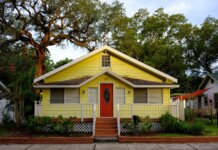July edition of [i]Secondary Marketing Executive[/i] has a cover story on the state of the Federal Home Loan Bank (FHLB) system,[/b] and I hope that the magazine's readers are able to take the time to read the article and consider the subject matter. Mercifully, this government-sponsored enterprise (GSE) is not suffering from the acute problems faced by Fannie Mae and Freddie Mac. However, there is reason to pay attention and be concerned about the FHLB system's viability. Founded in 1932 in response to the Great Depression, the FHLB system is the nation's oldest GSE. But David Oser, senior vice president for investments at Chicago-based ShoreBank, points out in the article that the 1932 model of 12 banks that are primarily centered in the Midwest and East Coast doesn't quite make sense in 2009. ‘The system was built on a financial and geographical model that doesn't exist anymore,’ says Oser. ‘Some of the banks are in places that are not hotbeds of financial activity anymore, like Topeka and Des Moines.’ Consolidation of the 12 banks into a smaller quantity would make sense, and at least two of the banks already weighed that option: The Chicago and Dallas banks explored the possibility of a merger in 2008, but the proposed union collapsed when the banks were unable to secure an agreement on how to combine their operations. I would like to report there are 12 rock-solid banks in the system, but that is not the case. According to a report issued June 17 by the American Institute for Economic Research, six of the 12 FHLBs experienced losses for the first quarter of 2009. The biggest loser was the FHLB of Boston, with $83.4 million worth of red ink. The Chicago bank came in second, with $39 million losses, followed by the banks in Pittsburgh ($23.6 million) and Seattle ($16.2 million). The Seattle bank is the weakest in the system, having recently acknowledged a $467 million capital deficiency. The Federal Housing Finance Agency (FHFA), the regulator of the system, listed the Seattle bank as undercapitalized. To date, the FHLB system has not received the level of scrutiny that Fannie and Freddie experienced. Many observers see no reason to fear for the worse. In the [b][i]Secondary Marketing Executive[/i][/b] article, Alex J. Pollock, resident fellow at the American Enterprise Institute in Washington, D.C., notes that the FHLB system as a whole has been able to withstand the roughest jolts of this ongoing economic crisis. ‘Their basic business is very sound, and they never lost a penny on main assets of advancing to members,’ says Pollock. ‘The FHLB of San Francisco came out of Indy Mac with every cent and charging them a pre-payment fee – and IndyMac was a big stress test.’ However, the strength of the FHLB system will be tested anew as the rising number of bank failures continues to rock the industry. One IndyMac-level situation is bad enough, but what happens when that is multiplied several times over? In an ideal world, Washington would be focusing on the FHLB system along with the other GSEs. But that is not happening – or if it is, then it is a very low priority. My greatest concern is that the federal government will have to go into a reactive damage control rescue, a la Fannie and Freddie, if the FHLB system's health takes a very serious turn for the worst. While the FHFA and the Federal Reserve clearly has its hands full at the moment, I sincerely hope that an effort is made to present the image of what a post-recession FHLB system will look like. While the individual banks are weathering the current storm with varying degrees of success, it is crucial that they have the power and stamina to handle whatever future calamities arise. After all, the very last thing we need is another bailout! – Phil Hall, editor, [b][i]Secondary Marketing Executive[/i][/b]. [i] (Please address all comments regarding this opinion column to hallp@sme-online.co
Subscribe
0 Comments












